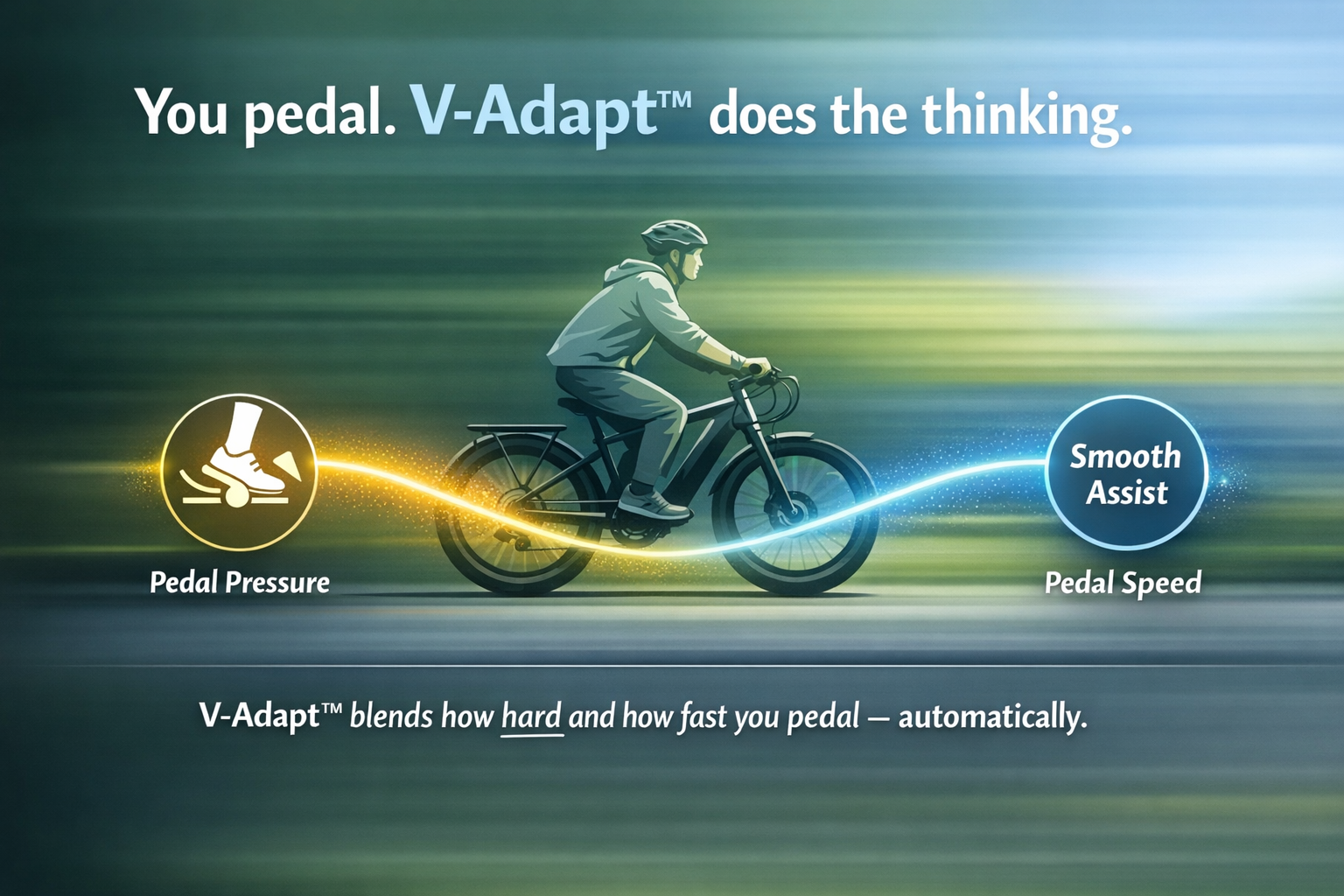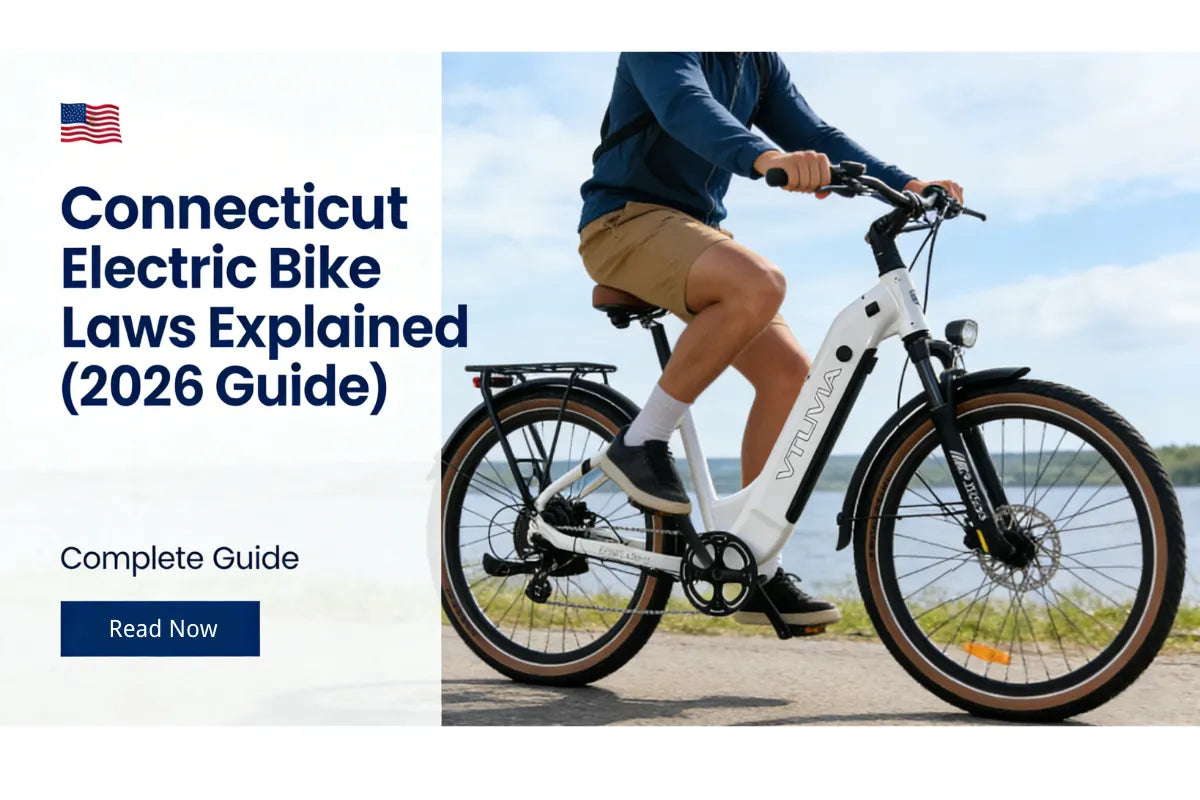Why Retirees in the U.S. Are Turning to Ebikes: Health, Lifestyle, and the Joy of Staying Active
A science-backed guide to how much to ride, the proven health and lifestyle benefits, and why step-through eBikes are ideal for healthy aging—plus practical tips and product recommendations from VTUVIA.
Explore VTUVIA Step-Through eBikes
Introduction: A New Chapter in Retirement Living
Retirement in the United States is changing. Today’s retirees want more than rest—they want mobility, independence, and the daily energy to enjoy family, friends, and the outdoors. With longevity increasing, the question is no longer just about living longer but living better.
Electric bicycles (eBikes) are a practical answer. Especially in a step-through frame, eBikes combine gentle cardiovascular exercise with confidence-inspiring design and smart pedal assistance. For many retirees, an eBike is a gateway to better health, freedom, and joy.
How Much Should Retirees Ride Each Week?
For adults 65+, the Centers for Disease Control and Prevention (CDC) suggests at least 150 minutes of moderate aerobic activity each week, plus muscle-strengthening activities on two or more days. The Mayo Clinic similarly encourages regular, low-impact movement for cardiovascular and joint health.
Why eBikes make this doable: you can fine-tune assistance to keep heart rate in a moderate zone, extend distance without over-fatigue, and stay consistent week after week. On days when energy dips, a higher assist level keeps your routine on track.
Physical Health Benefits of eBike Riding
1) Heart & Cardiovascular Health
Regular aerobic activity lowers blood pressure, improves circulation, and reduces cardiovascular risk—core messages from the American Heart Association (AHA). Studies show older adults on pedal-assist bikes achieve cardiovascular benefits comparable to traditional cycling, with lower perceived exertion—making routine exercise more sustainable.
2) Joint-Friendly, Arthritis-Smart
Cycling is a low-impact activity. The Arthritis Foundation highlights cycling as joint-friendly because it strengthens muscles around the knee and hip without the pounding of higher-impact sports. Step-through frames reduce strain when mounting and dismounting.
3) Balance, Core Strength & Fall Prevention
Falls are a leading cause of injury in older adults (per the National Institute on Aging). Cycling engages core and lower-body musculature that supports balance and coordination. Regular practice improves steadiness in daily life.
4) Weight Management & Metabolic Health
According to guidance summarized by Harvard Medical School, moderate cycling can burn hundreds of calories per hour while preserving joint comfort. Consistent movement supports healthy glucose control and helps reduce risk factors for type 2 diabetes.
Mental & Emotional Benefits
1) Better Mood, Less Stress
Aerobic exercise increases endorphins and supports better sleep—key findings emphasized by Harvard Medical School. Outdoor eBike rides add restorative time in nature, which many retirees describe as a mood “reset.”
2) Social Connection
The National Academies of Sciences, Engineering, and Medicine note that social isolation is common among older adults. Group rides or casual trips with family make activity social—and pedal assist helps riders of different fitness levels stay together.
3) Cognitive Support
Regular aerobic movement is associated with better memory and executive function in older adults. Cycling asks you to plan routes, judge traffic, and maintain balance—healthy mental challenges that keep the brain engaged.
Lifestyle Benefits: Beyond Fitness
Convenient Transportation
Perfect for errands, appointments, and community events. Avoid parking hassles and enjoy predictable travel times for short trips.
Eco-Friendly Choice
eBikes reduce emissions compared to short car trips, supporting greener everyday living without sacrificing convenience.
Freedom & Independence
When driving is less appealing, pedal assist restores independence and expands your personal mobility radius.
Adventure & Exploration
Extended range opens up parks, trails, and scenic routes you might otherwise skip—without worrying about the ride back.
Why Step-Through eBikes Help Seniors Ride More, With Confidence
- Easy on/off: Low, open frame reduces fall risk when mounting and dismounting.
- Upright comfort: Ergonomic handlebars and supportive saddle reduce strain on back, wrists, and shoulders.
- Customizable effort: Multiple assist levels let you train your heart on good days and rely on assist on tougher days.
-
Stability & control: Wider tires and strong brakes inspire confidence on neighborhood streets and park paths.
Practical Tips
- Start easy, build gradually: Begin with 10–15 minute rides and add 5 minutes each week until you reach your target routine.
- Pick safe routes: Choose low-traffic streets, bike paths, and parks. Midday light is easier for visibility.
- Mind your fit: Adjust saddle height and handlebar reach for an upright, relaxed posture. A professional fit helps.
- Gear up: Wear a properly fitted helmet, visible clothing, and consider a mirror and bell for communication.
- Hydrate & fuel: Bring water. For rides over 45–60 minutes, pack a light snack.
- Battery basics: Charge after rides, avoid full depletion, and store indoors at moderate temperatures.
- Check before you roll: Quick brake, tire, and light check; bring your phone and ID.
-
Consult your clinician: If you have specific medical conditions, ask your healthcare provider for personalized guidance.
FAQ
How many minutes should retirees ride per week?
About 150 minutes of moderate-intensity activity (e.g., 20–30 minutes, 5 days). Pedal-assist helps you keep that habit without overexertion.
Do pedal-assist rides still count as exercise?
Yes. You’re still moving your joints and elevating your heart rate. Research shows eBike riders achieve meaningful cardiovascular benefits with lower perceived effort.
Are step-through frames really safer for seniors?
They lower the risk when starting and stopping by making mounting and dismounting easier—especially helpful for limited hip or knee mobility.
References (U.S. medical & public health sources)
- Centers for Disease Control and Prevention (CDC): Physical Activity Guidelines for Older Adults.
- Mayo Clinic: Exercise and aging—how to stay active as you get older.
- American Heart Association (AHA): Benefits of aerobic activity for cardiovascular health.
- Arthritis Foundation: Low-impact exercise recommendations for joint health.
- National Institute on Aging (NIA): Falls prevention and balance.
- Harvard Medical School: Exercise and mood, sleep, and metabolic health.
- National Academies of Sciences, Engineering, and Medicine (NASEM): Social isolation and loneliness in older adults.
- Peer-reviewed studies on eBike cardiovascular outcomes and perceived exertion in older adults.
This article is informational and not a substitute for medical advice. Consult your healthcare provider for guidance tailored to your health conditions.
Ready to Ride? Choose a VTUVIA Step-Through eBike
Discover models designed for comfort, stability, and simplicity—so you can focus on what matters: staying active and enjoying the ride.
Shop Step-Through eBikes




Share:
How to Fix SF20H E-Bike Display Error Codes (Step-by-Step Solutions)
How to Replace an eBike Tire at Home (Step-by-Step)